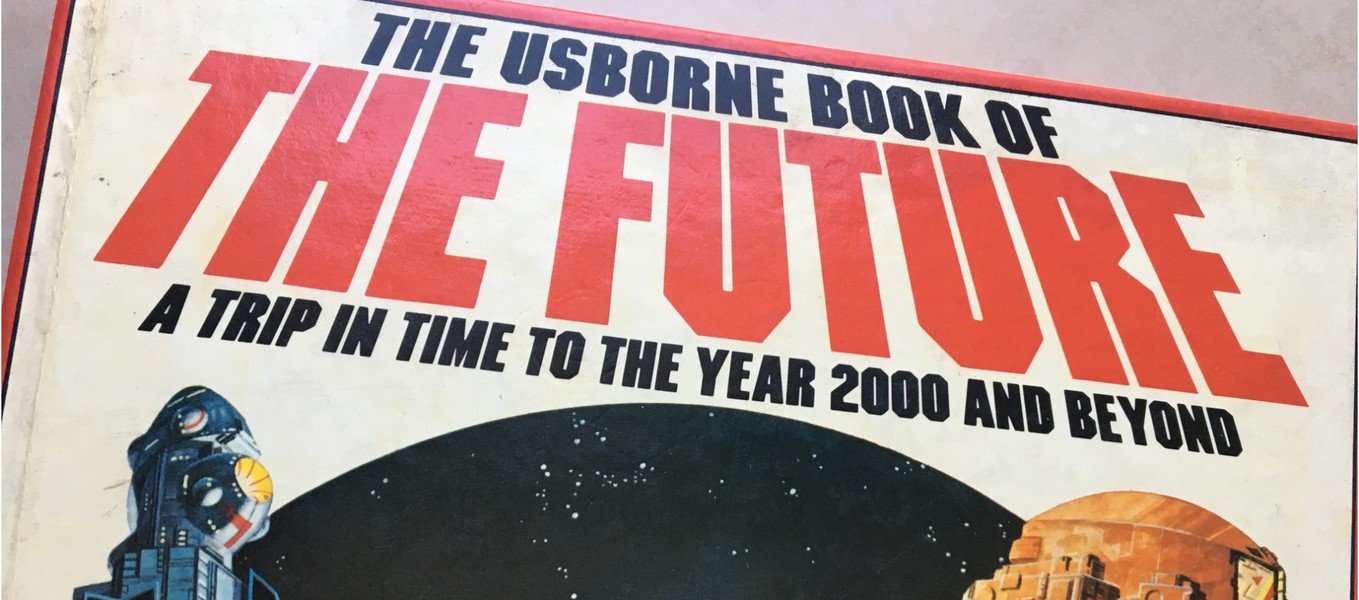“Now read on… into the fantastic world of the future!”
That’s how each of the three sections (Robots, Future Cities, Star Travel!) of The Usborne Book of the Future begin. Written by Kenneth Gatland and David Jefferis, it was published in 1979, and it was one of my favorite books when I was growing up (included on this page are some pictures from the book – they’ll give you an idea of its generally optimistic view of the future).
Nothing dates faster than the future. And you can certainly play that game with The Book of the Future, subtitled A Trip in Time to the Year 2000 and Beyond. So no, our houses don’t yet have automated servants handing out trays of drinks, and there aren’t robot forest firefighters. Or everyday Space Shuttle flights, space elevators, factories in Earth orbit, or massive domed cities, let alone an Olympics on the Moon (anticipated for 2020). Many of the timescales for supposed technologies-to-come are way off, if they happen at all, although maybe one day we will inhabit cities in space (indeed, some of today’s big tech billionaires seem to be counting on it).
What The Book of the Future reflects of course is how the future changed. I was born in 1971. The generation before me, some of them at least, could still be excited about the future. As in The Book of the Future, they could plausibly believe they might one day become space tourists, as well as find ways to eliminate poverty, crime, war, and disease here on Earth. A generation later, as a child I still read comics about daring space adventurers, but I knew they had a decidedly retro, 1950s feel to them. They were yesterday’s future, not the actual future.
This was because, as I grew up, the actual future seemed to get darker, it was darker: the possibility of nuclear annihilation in the Second Cold War, demonstrations, strikes, mass unemployment, increasing inequality, and the growing sense, as the punk movement put it, of ‘no future.’
As I discuss in my forthcoming book, this was reflected – and predicted – in fiction as well. From the late 1960s onwards, there was a new adultness in science fiction, including at the movies. Technical advances in filmmaking helped, but the real progress was in the subject matter: there was much less fantasy about aliens, and much more fatalism about humanity and its future (or possible lack of it).
And so, my new book is about how instead we seem to be heading into some of the dystopian futures that have been depicted in science fiction films – and most importantly, why ‘we’ don’t seem to have taken these visions seriously enough.
So, if that’s of interest, do give it a look – and take a journey, not into the fantastic, but definitely into the dramatic, world of the future.
Come With Me If You Want To Live: The Future as Foretold in Classic Sci-Fi Films, is out in November from Lexington Books. You can read more about it here.



